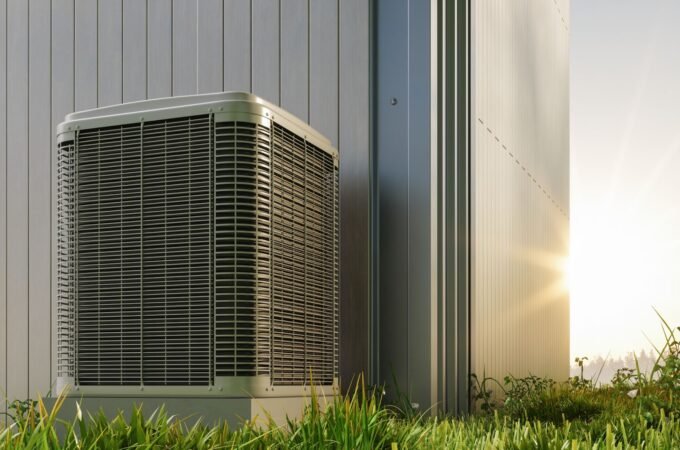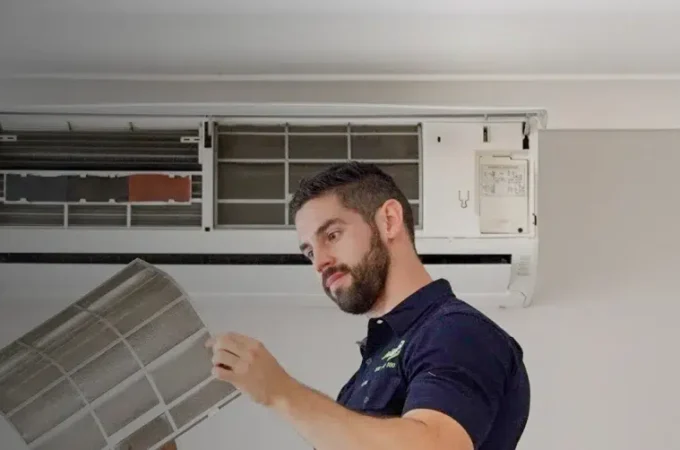
How to Use a Paint Sprayer Indoors The Best Tips You Should Know
How to use a paint sprayer is not an easy question to answer. Indeed, you need to know things around this topic, such as when to paint, what to prepare, etc. Fortunately, if you are searching for a guide to use a paint sprayer indoors, then you are in the right place.
A paint sprayer is different from other types of paint and this requires a different way to apply it on things. So, what is the paint sprayer? When should we use it for the best effectiveness? And how to apply it on the walls? Let’s find out now!
What is a paint sprayer?
A paint sprayer is a painting tool that applies paint onto the surface through the air. The related technique is called “spray painting”, which uses compressed gas inside a gun and launch the paint from the nozzle. Accordingly, there are two main tools in the market: airbrushes and spray guns with different sizes and painting patterns.
Airbrushes are a small hand-held tool used for detailed jobs such as fine art, nails painting, while we often use spray guns for spacious areas. Spray guns have hand-held type and automatic type; there are also many nozzles for different painting patterns. Actually, spray guns have been developed from airbrushes, but they are more modern and productive.

When should we use a paint sprayer?
Now you know what a paint sprayer is, but when you should use this tool? Why don’t we just use a brush or roller?
1. Use for a spacious area
As mentioned above, spray painting is useful in large areas. Things get done easily and quickly with a paint sprayer. You don’t need to recoat the walls many times, and this technique requires less effort than others. However, spray painting doesn’t work well on details or small corners.
2. Use for lumpy surface
Indeed, there are some surfaces with many lumps even after you wash, soften, and smoothen them. Then, luckily, you have a paint sprayer. As you apply the paint onto the surface through the air but not contacting directly on it, the coat looks more even and plain. The paint sprayer can also cover cracks and gaps better than brushes and rollers.
3. Use for smooth painting coat
If you want a perfect layer of paint, then spray painting is an excellent choice. The paint is spread evenly without any tiny particles and yarns like when you use brushes. Of course, you can still apply two or three more coats onto the walls, but you don’t have to worry if the layer gets thicker or overlapping.
How to use a paint sprayer
Preparation
Every painting job requires a proper preparation. The more carefully you prepare, the better your result. As spray painting is working through the air, you should not let anybody inside the room as you work to avoid breathing the fumes.
Move as much out of the room as possible and cover all remaining furniture and flooring with drop cloths. Apply masking tape and newspaper around fixtures and fittings in the room. .
Also, let the windows open so that fresh air can come in, while the toxic gas blows outside.
Equipment
With all paints, especially those not low VOC, you should take all the protective steps to prevent contact with your body. The following safety gear is essential:
- Protective glasses
- Protective clothes
- Protective masks
- Protective gloves
- Helmet
Protective goggles and masks keep your eyes and nose safe from toxic fumes, allowing you to spray accurately. Helmets, protective clothes, and gloves protect your hair and body.

Note:Spray painting is more toxic and hazardous than brush painting as the gas is airborne, and you may breathe it. Be careful when applying spray painting inside your house.
How to apply spray paint on the surface
- After proper preparation, with the right tools and equipment, you can now begin the painting process.
- First, choose the right type of paint and sprayer which are suitable for your purposes. Then, adjust the nozzle on the sprayer, fill in with paint, and test your spray gun on old exterior walls or a piece of scrap board. When you are confident enough you can start on the real job.
- Work from the top of the wall to reduce runs and maintain a safe distance between you and the wall so that it’s not too close or too far. If too close, you may get splashed with paint or inhale the fumes. If too far from the wall, your painting won’t be as accurate as you want.
- Apply consistently over the surface of the wall for an even coat of paint.
It’s important not to rush – the more slowly and carefully you go, the better the finished result.
After finishing the upper area of the wall, move on to the trims and corners. The reason why you should paint trims and edges last helps you to know what still needs painting. Understand that you may not be able to complete the job in a single day, especially if allowing for drying time. It is best to plan for the stages required to complete the job so that you know what to do for each stage of the project.

For application of any additional coats, wait for the specified drying time before painting. Note: Make yourself aware of the drying time required between any additional coats of paint.
In conclusion
With the above tips you will better understand how to use a paint sprayer indoors and like any other painting jobs you need to spend time on the preparation. Although there are differences between spray painting and other painting techniques, like most other tasks, practice makes perfect.




